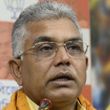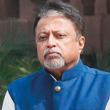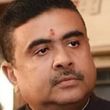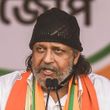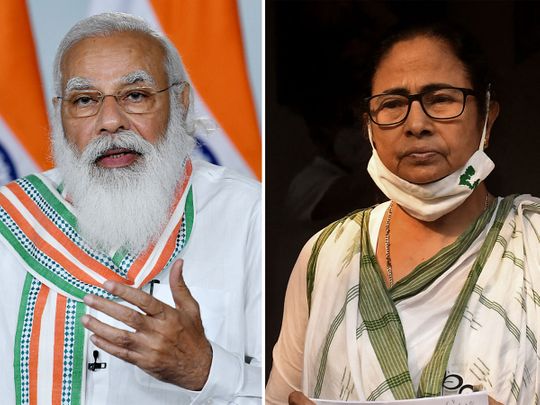
By Gautam Bhattacharyya, Senior Associate Editor
Kolkata: An assembly elections with the hype of a Lok Sabha polls - that’s perhaps the only way the upcoming one in the state can be summed up as. The months of March-April will see elections in the five states of West Bengal, Assam, Tamil Nadu, Kerala and Puducherry but none carries the air of anticipation like the one around this eastern Indian state.
The narrative of ‘Modi versus Mamata’ about this election is an all-too-familiar one - almost as an extension of the last Parliamentary elections in 2019 where the BJP increased their vote share dramatically in the state to 40% as against 43% of Trinamool Congress. It’s a result which emboldened the BJP to push for what they see as one of their last frontier - and the effort is there for everyone to see in the time and energy which the Prime Minister Narendra Modi and his party heavyweights have invested in the state in recent times.
The elections, staggered over eight phases in March-April, is perceived to be a two-horse race between the Big Two though the ‘Sanyukta Morcha,’ a Third Front cobbled between the CPI(M), Indian National Congress and the newly formed Indian Secular Front insist that they will not be there just to make up the members.
In the last state elections in 2016, TMC stormed back to power for the second term with 211 seats out of 294. The Indian National Congress won the second-largest number of seats in the House with 44, followed by the CPI(M) with 26. BJP cut a sorry figure with just three seats last times though that is going to change dramatically when the results are out on May 2.
The Achilles Heel for BJP, whether the party refuses to acknowledge on the plea that they don’t announce the chief ministerial face unless there is an incumbent, had been their inability to project a suitable candidate so far to match the aura of ‘Didi.’ It became a worst-kept secret as to how they were trying to woo Sourav Ganguly, one of the most successful India captains and arguably the biggest cultural icon of the state, but ‘Dada’ has - for now - decided to stay away from the political arena. A fresh round of speculations are doing the rounds around Mithun Chakraborty, the veteran Bollywood actor, who joined the party ceremonially during Prime Minister Narendra Modi’s last rally.
What is the essence of Mamata magic, which still keeps her in the pole position in this battle of nerves? Who are the preferred choices of BJP as possible options for a CM face? Can the CPI(M)-Congress-ISF combine provide a twist in the tale or just play party-poopers?
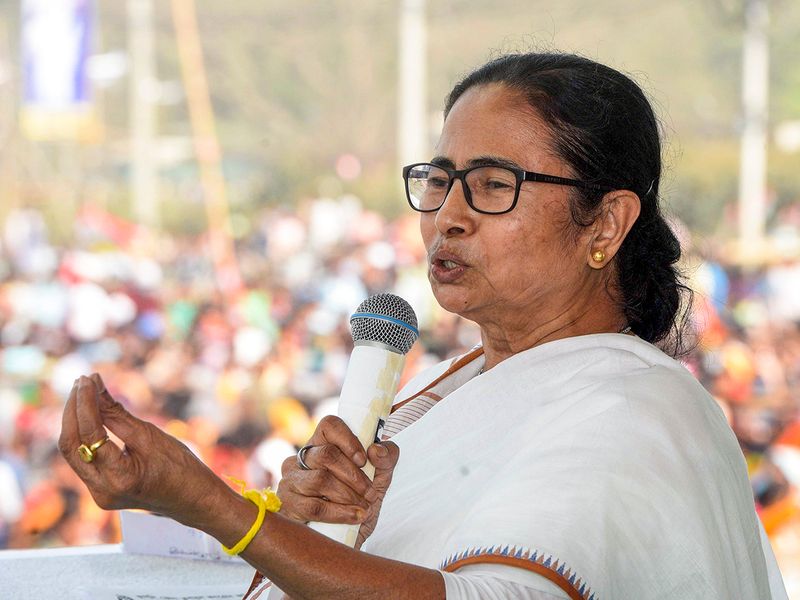
The Mamata magic: Game on. Catch me if you can
Sanjib Kumar Das, Assistant Editor
When Communist Party of India (Marxist) activist called Lalu Alam allegedly struck her on the head with a heavy stick in broad daylight at Hazra Crossing in southern Kolkata in August 1990, Mamata Banerjee, then a Youth Congress leader in West Bengal, was still struggling to cement her place in a party that had stalwarts at the national and state level whose names in the pecking order would come much, much higher than her’s.
On March 5, 2021, when Mamata Banerjee, the Chief Minister of West Bengal and Trinamool Congress (TMC) chief, was fielded by her party from the Nandigram constituency for the forthcoming assembly polls in the state, her political career seemed to have reached that critical mass that catapults a public persona from being a rank-holder in a certain party hierarchy to being that talismanic repository of hope and courage that is needed to buffer headwinds of the worst kind. With BJP fielding Suvendu Adhikari - Mamata’s once close confidante-turned current foe - also from Nandigram, it’s going to be one epic political battle to watch.
And Mamata knows it better than anyone else that buffering a ‘headwind’ called Bharatiya Janata Party (BJP) in the West Bengal state elections in 2021 has presented her with the toughest challenge of her political career till date. She also knows it too well that the more she succeeds in converting these elections into a referendum between her and the BJP - and not so much between her party TMC and the BJP – the better are her chances of keeping the saffron brigade at bay.
But coming back to that sultry August afternoon at Hazra Crossing in Kolkata in 1990. By that time, Mamata had very successfully sent out one message to an average Congress worker-supporter: If the all-pervasive and hitherto impregnable fortress called Left and the CPI (M) had to be dealt a bodyblow in Bengal, then it would be possible not under the Opposition banner of the Congress party, but through the guile and street-fighting audacity of a diminutive ‘Didi’ – Mamata. Because at that point, Mamata’s fight was as much against the Left and the CPI (M) in the state, as it was against a political ‘syndicate’ within her own Congress party in Bengal, some of whose senior leaders had reduced the national party into a mere signboard in the fight against Left rule in the state!
Many of the stalwarts within the Congress party had given the CPI (M) a virtual walkover by refusing to take the fight to the grassroots and that was the void that Mamata came in to fill in all earnestness and sincerity. This ultimately led her to break away from the Congress and form her own political outfit called Trinamool Congress – ‘trinamool’ literally meaning grassroots. The Lalu Alam episode will forever be etched in the collective consciousness of the people of Bengal as the one incident that showed more than ever before that here was a woman who was ready to take up the cudgels against a behemoth like the CPI (M) – not wincing even that wee bit in the face of a monstrous political opponent, not shying away even in the face of a life-threatening head injury.
Disciplined, cadre-based opposition
More than three decades later, Mamata is up against a challenge that is no less monstrous than ousting the CPI (M) from power in Bengal. This time, it’s a strong, disciplined, cadre-based nationalist party like the BJP that has unleashed its entire battery of leaders and its entire armoury of electioneering and campaigning hardware to counter ‘Didi’.
The undercurrents of a decay within the TMC organisation and a general mood of negativity about Mamata’s government in the state became quite clear when BJP, that was reduced to nothing more than a footnote in Bengal politics since the party’s formation in 1984, went on to win an unprecedented 18 seats in the state in the 2019 Lok Sabha elections.
That is why, Mamata deciding to fight the polls from a sensitive seat like Nandigram is as much a study in political symbolism, as it is a move steeped in the same brand of gung-ho optimism and dare-devilry that had seen her take that stick coming crashing down on her head, 31 summers ago. Nandigram and the East Midnapore district have traditionally been a stronghold of her one-time confidante and now a defector to BJP - Suvendu Adhikary. It is seen as a pocket borough of the Adhikary family. By announcing her decision to fight from Nandigram, Mamata has thrown the gauntlet at both Adhikary and the BJP: ‘Game on. Stop me if you can.’
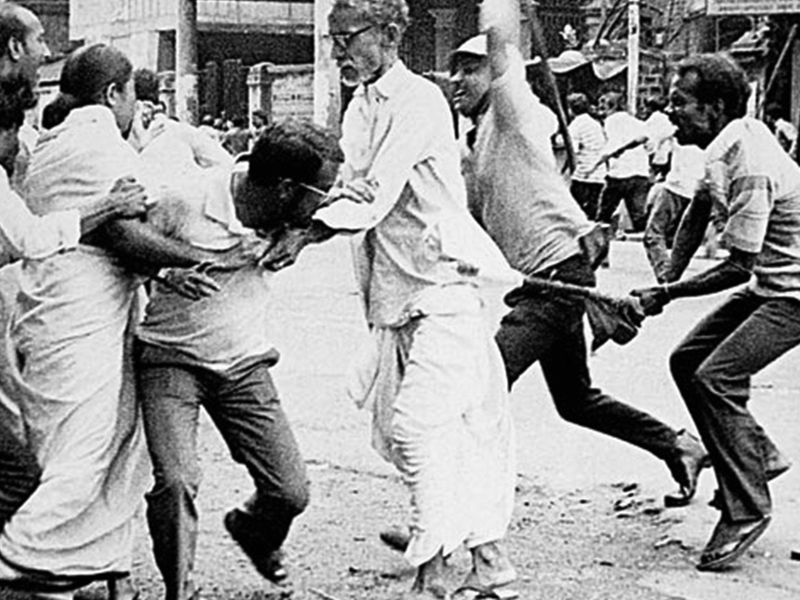
No doubt, Mamata’s decision to vacate her own pocket borough of the Bhowanipore seat in southern Kolkata is based on cool political calculations because the portends were not too good for her party in that seat as was evident from the voting patterns and percentage of votes polled against the TMC candidate in some booths of the South Kolkata parliamentary seat (under which Bhowanipore falls) during the 2019 Lok Sabha elections. The point is that Mamata could have chosen any other safer bet from amongst the remaining 293 constituencies in the state but by choosing Nandigram, she has once again taken the fight right into the heart of the enemy camp.
Right from those hand-spun cotton sarees to the simple flip-flops that she prefers to sport even today, her dalliance with a minimalist way of life is still her biggest political capital – even today. Obviously, she keeps playing that role to perfection.
Critics maybe quick to point out the tech-savvy side of her persona, that stays carefully stashed aside to give more prominence to her pedestrian appeal, citing the iPhone she uses or the iPad she prefers to carry on her outstation trips. However, let’s not forget this: Mamata, in spite of all the misgivings of her party, still continues to be the most believable face and the most trustworthy name before the electorate in Bengal. That is one political capital and a brand equity that even a regimented party like the BJP is finding hard to crack.
In 1984, she had stunned many a political pundit when she beat CPI (M) doyen Somnath Chatterjee from the Jadavpur Lok Sabha seat in West Bengal to announce her entry into politics. While there were many heavyweight Congress contenders for the Jadavpur seat, it was then Prime Minister Rajiv Gandhi’s insistence to field a young leader against veteran Chatterjee that ultimately saw Mamata win a David-vs-Goliath. Had she lost that battle, it could have put a full stop to her nascent career in politics. But she fought on to win many a battle in the years ahead.
This time in Nandigram, she is up against her bete noire in probably the toughest electoral contest of her life – even bigger than the one she won against Chatterjee. And a debacle this time could well constitute the opening lines of her political epitaph. But then, when it comes to Mamata Banerjee, in the words of Joseph Conrad in ‘Lord Jim’, ‘The last word shall never be said.’
Twitter: @moumiayush

BJP has enough options, but who can take on Didi’s aura?
Somshankar Bandyopadhyay, Assistant Editor
If there’s one thing the BJP lacks in its fight against the incumbent Trinamool Congress in the upcoming West Bengal assembly elections, it is the lack of a single leader at the state level who can stand up to the charisma and mass appeal of Chief Minister Mamata Banerjee. Truth be told, there’s no one in the party who can even hold a candle to her in this respect.
On the other hand, the ruling party at the Centre has traditionally seldom announced any chief ministerial candidate before the election is actually won in a state. Uttar Pradesh, Assam, Tripura are three prominent examples where the chief minister was decided after the polls were held. The BJP is preferring to fight the way it has done in other parts of the country — riding on the charisma of Prime Minister Narendra Modi and the party machinery under Home Minister Amit Shah.
One does not know, though, whether that policy would work in Bengal, a state which has had some of towering personalities guiding its fortunes through the past seven decades. Starting with Dr Bidhan Chandra Roy, who is considered the architect of modern Bengal on par with what Jawaharlal Nehru did at the national stage as Prime Minister, the list includes Prafulla Chandra Ghosh and Siddhartha Shankar Ray from the Congress, followed by the stalwart Jyoti Basu and Buddhadeb Bhattacharya of the CPI(M). And of course Didi has ruled the roost for the past decade.
Who are likely to be the people who may take over this formidable mantle in case the saffron party comes to power? A look at the possible candidates:
Dilip Ghosh: The state president of the BJP has never been in any form of administrative position in his life, a factor likely to be downplayed in case the party comes to power. While being a master of controversies in several of his statements, it would however be wrong to under-estimate his political acumen. A pracharak for the RSS since 1984, Ghosh took over the reins of the BJP in West Bengal barely five years ago.
In his debut on the electoral scene, he defeated seven-time MLA Gyan Singh Sohanpal of the Congress during the 2016 assembly elections. His biggest achievement, however, came with the steering of the party to capturing of 18 of the 42 Lok Sabha seats from the state in the 2019 Assembly elections. He remains a foremost contender in the absence of surprises.
Mukul Roy: Once the number two man in the Trinamool Congress, Roy caused the biggest political earthquake when he changed his colours to join the saffron brigade in 2017. His brief brush with governance came when he served as federal minister of state in the shipping and later the railways ministries. Having once been the principal force behind building the ground political base of the Trinamool Congress, he is now using those same organisational skills to the benefit of the BJP.
The recent defections of several Trinamool bigwigs to the BJP, including former railways minister Dinesh Trivedi, stand testimony to this. However, political organisation skills may not be enough to see him through to the coveted post.
Suvendu Adhikari: The battle lines have been drawn — Adhikari will take on the Trinamool supremo at his home turf of Nandigram in Midnapore district in the just-announced list of candidates from the two parties. For decades, Adhikari, with his father and brothers, have been Trinamool’s main vote catchers in the district, and were primarily responsible for the resistance movement to the proposed land acquisition by the Left Front, which heralded the downfall of their three-decade rule.
Having spent a decade in Banerjee’s government as well, he is the most experienced among the BJP members in the state in running the administration. However, it is to be seen how far Adhikari will be able to pull crowds and by extension, garner votes for his new political masters beyond his home turf.
Mithun Chakraborty: Bengal’s other national icon apart from Sourav Ganguly, the Bollywood actor has done quite a turn from his early days of ultra-left activism, to a member of the Upper House of the Indian Parliament from the Trinamool Congress and now the BJP.
Having prided himself as a ‘son of the soil’, Chakraborty’s streetfighter image can be just the boost the saffron party needs as a counterweight to the mass appeal of Mamata Banerjee. His rags-to-riches story is stuff of Bollywood legend, and while the time is short, it is possible that he may turn out to be the dark horse.

West Bengal: A brief political history
Somshankar Bandyopadhyay, Assistant Editor
The eastern Indian state of West Bengal is heading towards elections for its Legislative Assembly later this month. The current Assembly has 294 members, of which the ruling Trinamool Congress party holds 211 seats. The Indian National Congress holds the second-largest number of seats in the House, with 44 seats, followed by the Communist Party of India (Marxist) with 26. India’s current ruling party, the Bharatiya Janata Party, holds just three seats.
The post-independence political history of West Bengal can roughly be divided into three eras. The first, immediate era, after independence, lasted for about three decades, in which the Congress mostly held sway as the country was recovering from the scars of Partition. Dr B.C. Roy, the stalwart leader, led West Bengal out of the ruins during that phase. It, however, ended ignobly with the tenure of Siddhartha Shankar Ray, one of the architects of the infamous Emergency, though he is credited with ending the ultra-left Naxalite uprising.
With Ray’s exit, the stage was set for his schoolmate from St. Xavier’s Calcutta, Jyoti Basu, to take the helm of the CPI(M)-led Left Front in 1977. Basu spearheaded the Left Front’s aggressive agrarian reforms, most famous of which was ‘Operation Barga,’ wherein the bargadars (sharecroppers) received a share of the farm produce.
* Jyoti Basu had been the Chief Minister for 25 years of them, over five terms, while his successor Buddhadeb Bhattacharjee served two terms.
While this helped boost agrarian income, the Left’s land reform measures resulted in a fragmentation of land holdings, which was inimical to any major industries setting up shop in the state, which were anyway being driven away by the militant trade unions. Still, the Left managed to hold onto power for a staggering 34 years, the longest-serving democratically elected communist government in the world.
It ended as the party apparatchiks belatedly tried to arm-twist the landholders to give up their lands for industry, thus providing a base for Mamata Banerjee to launch her movement, and finally unseat the Left.
The third and final phase began with Trinamool Congress taking over the reins in 2011. Banerjee began with a lot of promise, and made several moves, which initially won her a lot of public support. However, a number of corruption scandals involving several of her party members dented her squeaky clean image. This, along with certain other measures, were used as cannon fodder by the BJP. Added to this were defections by key Trinamool members, which resulted in a surge of the party’s vote share and its spectacular showing in the 2019 Lok Sabha elections.
Now, with less than a month to go, are we to see a fourth era in the political history of the state, or a continuation of the third? We will know soon.
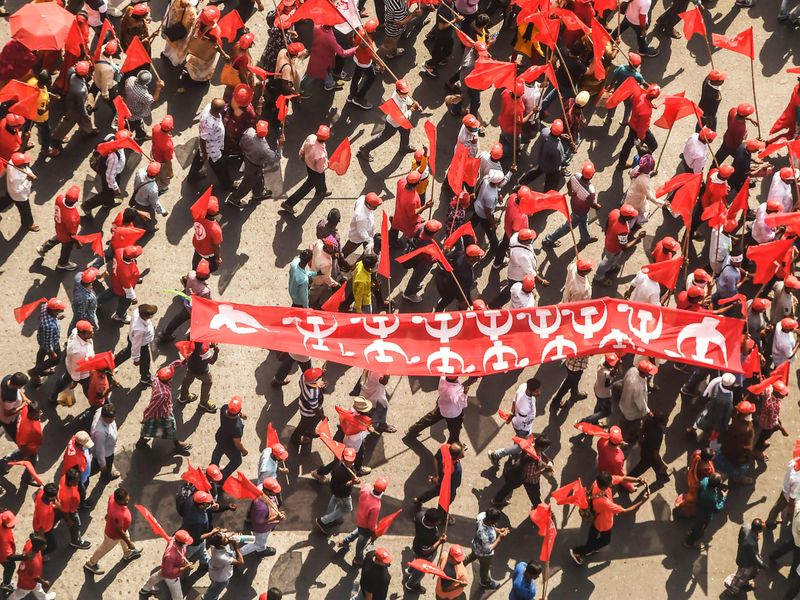
CPI(M)-Congress-Indian Secular Front: A threat or party poopers?
By Gautam Bhattacharyya, Senior Associate Editor
A surprisingly impressive gathering on February 28 at the Brigade Parade ground announced the arrival of ‘Sanyukta’ Morcha (United Front), an alliance of somewhat disparate elements like the CPI(M) led Left Front, Indian National Congress and the newly formed Indian Secular Front. While CPI(M) wear a positive outlook that it can help them gain them recover lost ground and project themselves as a viable alternative against the ‘rule of corruption and nepotism’ of Trinamool Congress and the ‘divisive politics’ of BJP, the so-called Third Front does not quite look prepared for the challenges ahead.
The first discordant note was struck by Abbas Siddiqui, the Muslim cleric and the brain behind ISF, when he took a politically incorrect stance during his rally at the Brigade speech. While Sharif praised the CPI(M) for giving them respect, he took a dig at Adhir Chowdhury - the President of state unit of Congress and one of the key figures behind the alliance by saying that they wanted ‘‘bhagidari’’ and not ‘‘bhiksha’’ (share and not dole) for the Congress’ alleged inflexibility in terms of some seat-sharing in North Bengal.
The CPI(M) patriarch, Biman Basu, and former MP Mohammed Selim quickly moved in for the damage control and Sharif later apologised for the outburst - and the alliance has now announced
candidates for 60 seats which will go to polls in the first two of the eight phases of elections.
The CPI(M), the Communist Party of India, the Revolutionary Socialist Party and the All India Forward Bloc among others may contest in 165 seats, the Congress in 92 and the ISF may get about 37 seats. The Left Front will contest in 37 seats in the first list, Congress in 11 seats and the ISF in five seats. The alliance, however, has not been able to announce candidates in seven seats at stake - including the contentious Nandigram in East Medinipur.
Young candidates
Of the 37 seats of the Left Front, the CPI(M) will contest in 28 seats. Bose said the Left parties had put emphasis on youth candidates to fight the perception that the party has not been able to win over the next generation to carry the mantle forward. “Most of the candidates are between 30 and 40 years, some are 40 to 50 years and only a few candidates are elderly,” he said.
During a conversation with Gulf News earlier, Selim promised that the elections will not be a ‘two-horse race’ between the incumbent Trinamool Congress and BJP as projected by the mainstream media. The political grapevines believe that the ISF may have been created to make a dent in the TMC’s minority votebank and help the BJP, while there is another school of thought which believes that Siddiqui’s party may eventually pull themselves out of the Front and join the TMC in case of a hung assembly.
Only time can tell if the alliance can mark the resurgence of the Left Front, who has everything to gain, or play the party poopers for the Big Two!
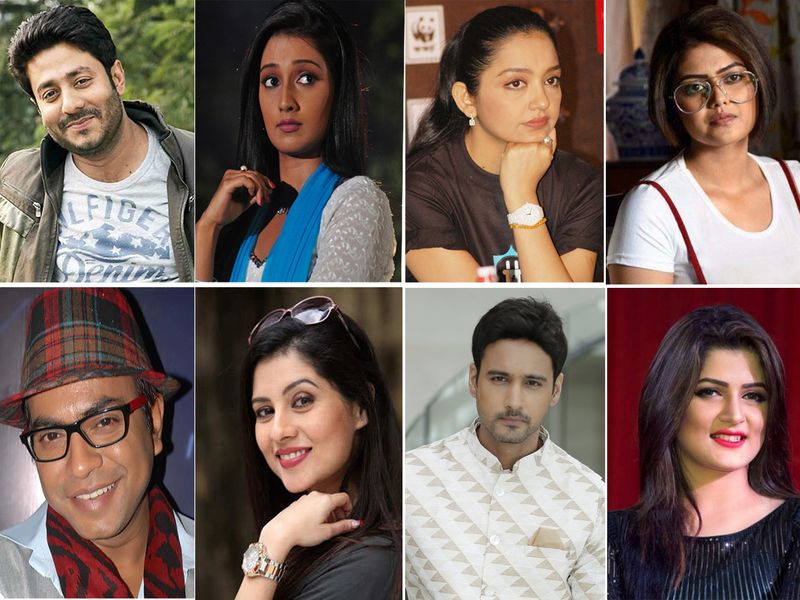
Mithun, Tollygunge A-listers add heft to Bengal’s political battle
Sanjib Kumar Das, Assistant Editor
The forthcoming state assembly elections in West Bengal have an unmistakeable glamour quotient about them, with a bevy of stars from the big and small screen alike pledging their support for either of the two main political rivals in the state – Trinamool Congress (TMC) and Bharatitya Janata Party (BJP). But undoubtedly, the biggest ‘acquisition’ ahead of these polls has been in the form of Bollywood star and Bengali actor Mithun Chakraborty – a former TMC Rajya Sabha member - who joined the saffron brigade at a public rally organised by the BJP in Kolkata on March 7, which was addressed by Prime Minister Narendra Modi.
At the time of writing this report, it was still not clear whether Mithun would be named as a BJP candidate for these elections or whether his role would only be limited to lending some star value to the party’s campaign.
About a week ago, ruling TMC rolled the dice by naming producer-director Raj Chakraborty from Barrackpore, actress Sayantika Bandyopadhyay from Bankura, actor Soham Chakraborty from Chandipur, actresses June Maliya and Sayoni Ghosh from Midnapore and Asansol East assembly constituencies, respectively, in its long list of celebrity candidates. For the record, there are nine celebrity candidates on the TMC list for these polls. Several other actors and actresses like Dipankar Dey, Sudeshna Roy, Kanchan Mullick, Subhadra Mukherjee, Dheeraj Pandit and singer Aditi Munshi have joined ranks with the Mamata Banerjee-led party in recent weeks.
Film actors can be responsible politicians too. Our party (BJP) has good examples in Smriti Irani and Locket Chatterjee, the latter from our own state.
On the other hand, Tollywood A-listers such as Srabanti Chatterjee, Payel Sarkar, Yash Dasgupta, Hiron Chatterjee and Rudranil Ghosh have also taken the plunge, owing their allegiance to BJP. Among these stars, Ghosh joining BJP was the most sensational as he was not just a TMC supporter and sympathiser until recently, but had even been appointed by the Chief Minister Mamata Banerjee-led government as the Commissioner, Right to Public Service, under the state’s Consumer Affairs Department – a post he held even until mid-December last year. It is quite likely that some of these stars, and most likely Ghosh himself, will feature on the BJP’s list of candidates.
Meanwhile, another celebrity actress, Sreelekha Mitra, known for her Left-leaning ideas for long, was recently seen making Instagram and Facebook posts in favour of the Left-Congress rally at Kolkata’s Brigade Parade Ground on February 28.
With such a dash of glamour on either side of the political spectrum in Bengal, it now remains to be seen to what extent these stars succeed in encashing their personal popularity into political capital for their respective parties at the hustings.
Twitter: @moumiayush


